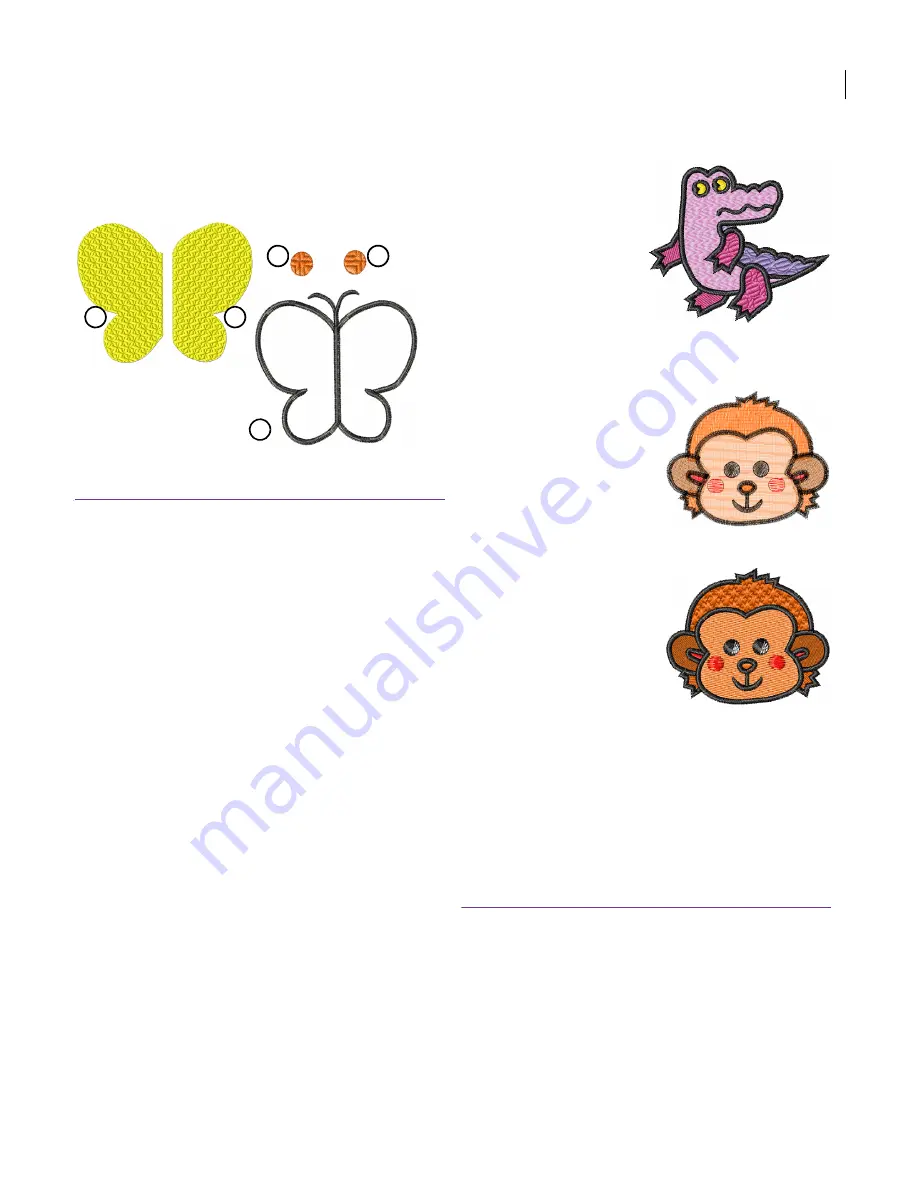
JANOME Embroidery Software Instruction Book
Chapter 3 Introduction to Embroidery Digitizing
15
order in which shapes are stitched out. Of course
you can always change the sequence to improve
the stitchout – for example, to minimize color
changes. Details should be stitched last.
Digitizing embroidery
Designs created in EasyDesign are composed of
‘embroidery objects’. They are called ‘objects’
because they are discrete entities which can be
manipulated independently of each other. Each
object has certain defining properties or
‘characteristics’ such as color, size, position, and so
on. The most important property of an embroidery
object is its stitch type.
Digitizing consists of turning the basic shapes of a
design into embroidery objects. Different tools are
suited to different shapes. You can digitize them
manually by marking reference points along an
outline, or by using ‘smart’ tools which transform
shapes automatically into embroidery objects.
Stitches are automatically calculated from design
outlines and properties. They are regenerated
whenever you press Enter. This means you can
scale, transform and reshape JANOME Embroidery
Software designs without affecting stitch density or
quality.
Selecting objects
JANOME Embroidery
Software EasyDesign
provides various ways
to select the objects
that comprise an
embroidery design. You
can select all objects to
modify the design as a
whole, or individual
objects for more precise
modification. See
Selecting Objects
for details.
Viewing designs
EasyDesign provides
numerous ways to view
an embroidery design.
You can show or hide
needle penetration points
and connectors. Zoom in
on an area to see more
design detail or even
individual stitches. Pan
across a design to view
parts that are not
currently visible and use
the Overview Window to
view a thumbnail of the
design. See
Viewing
design elements
for
details.
Use grid lines to help
accurately align or size
embroidery objects. You
can show or hide the grid.
See
Displaying the grid
for details.
View completed designs in Visualizer. View the
stitching sequence by ‘traveling’ through your
design by stitches, colors or objects. See
Traveling
through designs
for details.
Input methods
Depending on the shape and stitching you require,
you use a different ‘input method’ or ‘tool’ to enter
‘reference points’. Input methods determine
whether stitching is an outline, a column of curving
stitches, or a fill of parallel stitches. Methods in
EasyDesign include Run Line, Turning Angle
Fill, Border, and Parallel Fill.
details last
1
2
3
5
4
Normal view
Visualizer
Содержание DigitizerPro
Страница 236: ...234 Part IX Software Feature Table ...
Страница 243: ...241 Part X Appendices Glossary Index ...
















































